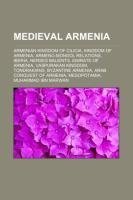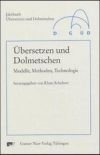
Medieval Armenia
Source: Wikipedia. Pages: 33. Chapters: Armenian Kingdom of Cilicia, Kingdom of Armenia, Armeno-Mongol relations, Iberia, Nerses Balients, Emirate of Armenia, Vaspurakan Kingdom, Tondrakians, Byzantine Armenia, Arab conquest of Armenia, Mesopotamia, Muhammad... Viac o knihe
Produkt je dočasne nedostupný
14.43 €
bežná cena: 16.40 €
O knihe
Source: Wikipedia. Pages: 33. Chapters: Armenian Kingdom of Cilicia, Kingdom of Armenia, Armeno-Mongol relations, Iberia, Nerses Balients, Emirate of Armenia, Vaspurakan Kingdom, Tondrakians, Byzantine Armenia, Arab conquest of Armenia, Mesopotamia, Muhammad ibn Marwan, Kingdom of Artsakh, Jean Dardel, Abdallah ibn Abd al-Malik, Battle of Kapetron, Marzpanate Armenia, Goghtn, Sis, Dizak, Officers of the Armenian Kingdom of Cilicia, Albanopolis, Armenia. Excerpt: The Armenian Kingdom of Cilicia (Classical Armenian: ¿¿¿¿¿¿¿¿ ¿¿¿¿¿¿¿¿ ¿¿¿¿¿¿¿¿¿¿¿¿¿ Kilikio Haykakan Tagavorutyun),(French: Le Royaume Arménien de Cilicie), also known as the Kingdom of Cilician Armenia or New Armenia, was an independent principality formed during the High Middle Ages by Armenian refugees fleeing the Seljuk invasion of Armenia. Located outside of the Armenian Highland and distinct from the Armenian Kingdom of Antiquity, it was centered in the Cilicia region northwest of the Gulf of Alexandretta, in what is today southern Turkey. The kingdom had its origins in the principality founded c. 1080 by the Rubenid dynasty, an alleged offshoot of the larger Bagratid family, which at various times had held the thrones of Armenia and Georgia. Their capital was at originally Tarsus, and later became Sis. Cilicia was a strong ally of the European Crusaders, and saw itself as a bastion of Christendom in the East. It also served as a focus for Armenian nationalism and culture, since Armenia proper was under foreign occupation at the time. Cilicia's significance in Armenian history and statehood is also attested by the transfer of the seat of the Catholicos of the Armenian Apostolic Church, spiritual leader of the Armenian people, to the region. In 1198, with the crowning of Levon the Magnificent of the Rubenid dynasty, Cilician Armenia became a kingdom. In 1226, the crown was passed to rival Het'umids through Queen Zabel's second husband, He'tum I. As the Mongols conquered vast regions of Central Asia and the Middle East, Het'um and succeeding Het'umid rulers sought to create an Armeno-Mongol alliance against common Muslim foes, most notably the Mamluks. In the thirteenth and fourteenth centuries, the Crusader states disintegrated and the Mongols became islamized, leaving the Armenian Kingdom without any regional allies. After relentless attacks by the Mamluks in Egypt in the fourteenth century, Cilician Armenia of the Lusignan dynasty, marred in an internal reli
- Vydavateľstvo: Books LLC, Reference Series
- Formát: Paperback
- Jazyk:
- ISBN: 9781156130568



 Anglický jazyk
Anglický jazyk 
 Nemecký jazyk
Nemecký jazyk 

 Ruský jazyk
Ruský jazyk 



